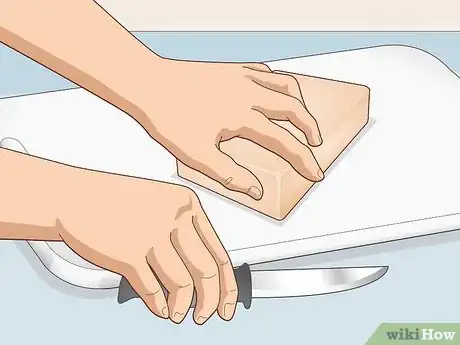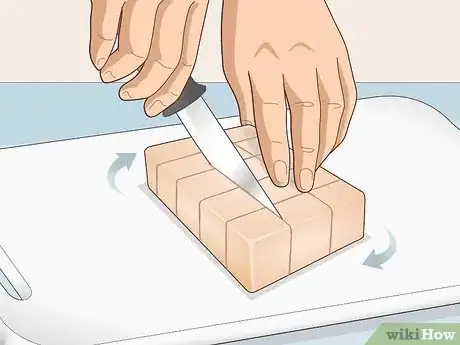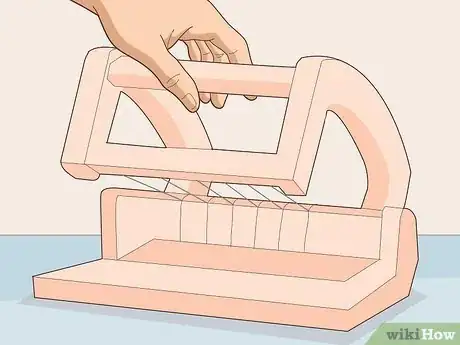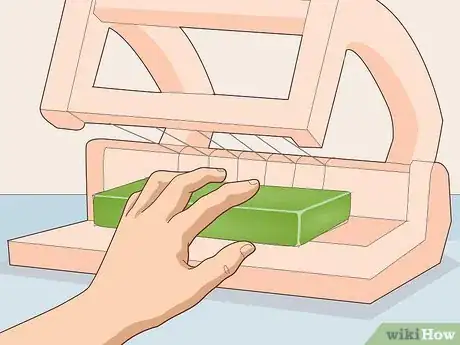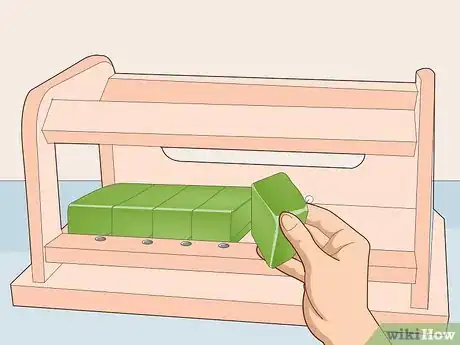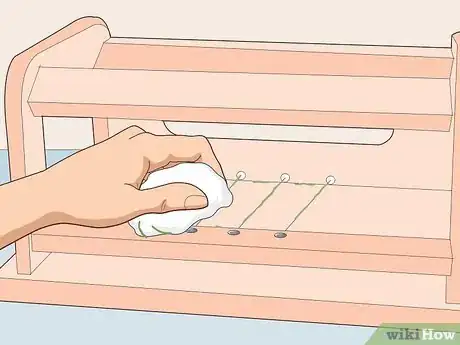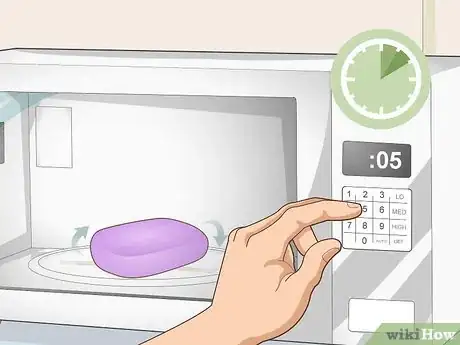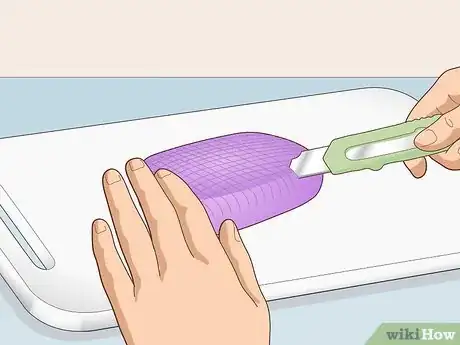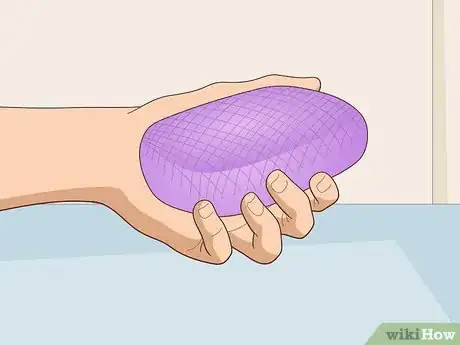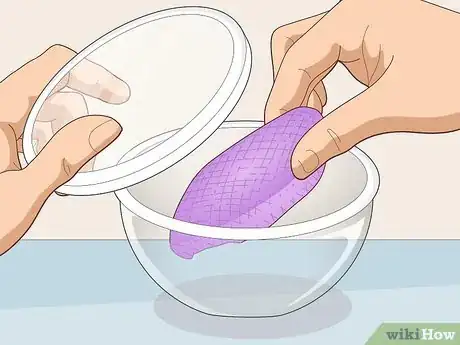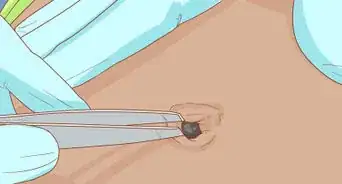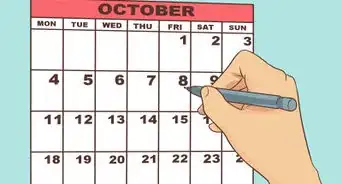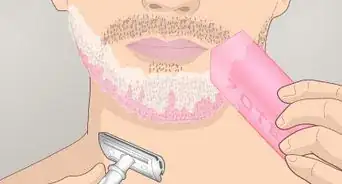This article was co-authored by wikiHow staff writer, Eric McClure. Eric McClure is an editing fellow at wikiHow where he has been editing, researching, and creating content since 2019. A former educator and poet, his work has appeared in Carcinogenic Poetry, Shot Glass Journal, Prairie Margins, and The Rusty Nail. His digital chapbook, The Internet, was also published in TL;DR Magazine. He was the winner of the Paul Carroll award for outstanding achievement in creative writing in 2014, and he was a featured reader at the Poetry Foundation’s Open Door Reading Series in 2015. Eric holds a BA in English from the University of Illinois at Chicago, and an MEd in secondary education from DePaul University.
There are 13 references cited in this article, which can be found at the bottom of the page.
This article has been viewed 71,280 times.
Learn more...
You'll need to cut soap if you want to share soap samples with friends or potential customers. If you're making sheets of homemade soap, you'll need to dice it with a wire-cutter to create individual bars. Even if you're simply partaking in some therapeutic ASMR soap shaving, you'll still need to cut it correctly. Whatever your goals may be, cutting soap can be fun, simple, and easy. Just make sure that you have the right kind of knife, have heated your soap appropriately, and take the proper safety precautions when working with your materials.
Steps
Working with Bar Soap
-
1Microwave the bar of soap for 5-10 seconds on each side to soften it up. Room temperature soap is going to be very hard to cut, so you'll want to warm it up in the microwave. Don't microwave it for too long though, or you'll risk melting your soap. Once one side has been microwaved, flip it over and microwave it for the same length of time.[1]
- Even if there isn't any residue visibly left on the plate after you microwave your soap, you'll still want to wash your plate. It's not healthy to ingest even small amounts of soap, so you'll want to clean your plate thoroughly.
-
2Place your soap on a cutting board and grab an appropriate knife. Lay your cutting board on a flat and stable surface, such as a countertop or strong table. Choose a knife based on the size of your soap. Use a paring knife for thinner bars of soap, a utility knife for bigger pieces, and a chef's knife for larger bars.[2]Advertisement
-
3Hold your soap in place and make parallel cuts through the soap. With the bar in your nondominant hand, take your knife and begin to make parallel cuts through each section of the soap. Move your knife through the soap slowly by pressing your handle directly down while keeping the point of the blade firmly pressed against the cutting board, opposite to where you're standing.[3]
- Soap is slippery, so don't cut too quickly or you'll risk cutting yourself.
- The distance between cuts will determine the width of each individual piece of soap. A larger distance between cuts will result in bigger pieces, and smaller incisions will result in smaller pieces.
- If your soap feels harder than a cold block of cheese while you're cutting it, microwave each side for an additional 5 seconds.
-
4Rotate your bar of soap and continue cutting if you want cubes of soap. Hold the slices of soap together with your nondominant hand and rotate them lengthwise. Repeat the cutting process, this time cutting in a perpendicular sequence of parallel lines. Adjust the distance between cuts to create cubes of soap.[4]
- Smaller cubes of soap are excellent if you want to let friends and potential customers sample a certain brand or recipe, since you can give them away without giving up too much soap.
-
5Store your excess soap in a small plastic container. Any plastic container with a lid will do. You should store your soap in a cool, dry place. You may want to refrigerate for 20 minutes it if it's starting to melt from the exposure to the microwave.
Slicing Slabs of Soap
-
1Get a multi-wire soap cutter and place it on a firm surface. Multi-wire soap cutters are an important tool if you're making large amounts of soap. They use a flat surface and a hinge to apply pressure to the thin wires that cut through a sheet of soap, and they can often be purchased for relatively cheap prices. A soap cutter is the most efficient way to make individual bars of soap.[5]
-
2Place the slab of soap on the far-left edge of the wire cutter. Unless you're making colossal amounts of soap, most homemade slabs of soap will fit in a wire cutter without any problem. Place your nondominant hand against the end of the cutter and spread it out flat. Use your nondominant hand to line your soap up with the edge so that it's flush with the end of the cutter.[6]
- If your soap won't fit into your wire cutter, you may need to break off the excess sheet and do this twice.
- Wear protective eyewear when working with a wire cutter. A wire can snap off on rare occasion.[7]
-
3Pull the upper section of your wire cutter down through the soap. Pull down firmly and slowly to ensure that the soap doesn't slide while it's being cut. Push the wires all the way through the soap by making sure that your wire cutter is pulled down as far as it'll go.[8]
- You should feel more and more resistance the further down you pull. This is normal and you shouldn't worry about breaking anything. The wire cutter is designed to handle heavy resistance.
-
4Remove the slices of soap while the wire cutter is still lowered. If you pull the wire cutter back up before removing your soap, you may accidentally end up catching a clean edge on the wire and ruining it. Most wire cutters leave a space at the top for you to reach down and pull out each individual bar of soap.[9]
-
5Wipe any soap residue off of your wire cutter's strings with a damp cloth. Rinse your cloth in cold water and then wring it out by hand. Wipe down each of the individual strings on your wire cutter. Soap leaves a residue behind, and if you're cutting different scents of soap, you don't want to mix your ingredients while cutting it.
- A simple wipe is an easy way to ensure that future cuts are clean as well, since you're removing any excess material that may impede cutting.
Shaving Soap for ASMR
-
1Microwave your soap for 5-10 seconds on each side to soften it. Room-temperature soap is hard to cut, so you should heat it for 5-10 seconds in the microwave. You don't want to overheat your soap though, since it will become difficult to handle if it melts too much.[10]
-
2Place your block of soap on a cutting board and get a snap-off utility knife. Put your cutting board on a table or hard work surface where you can sit down. ASMR soap dicing requires careful cuts, which are difficult to accomplish when standing. Lay your soap out so that it lays flat on the cutting board.
- ASMR stands for autonomous sensory meridian response—a physiological sensation similar to a tingling feeling on your neck and scalp. Many people try to generate an ASMR response because they find it therapeutic and mesmerizing.[11]
- A snap-off utility knife has a thinner blade and will be easier to use.[12]
- Never use a knife without the supervision and permission of an adult.
-
3Cut thin lines into your soap so that it looks like a grid. Using only the first 1⁄2 inch (1.3 cm) of your blade, cut a sequence of parallel lines into the top of your soap. Each line should between 1⁄2 inch (1.3 cm) and 1 inch (2.5 cm). Rotate your bar of soap and use the first 1⁄2 inch (1.3 cm) of your blade to cut a perpendicular set of parallel lines. The final result should look like grid paper.[13]
- You can use a vegetable dicer if you have one. Just make sure that when you press it down that you're not pushing it all the way into the soap.
-
4Hold the bottom of the soap loosely in your nondominant hand. You never want to cut in the direction of your hand, so double-check your grip to ensure that you're only bracing the bottom half of the soap. With the soap sitting in your palm, brace the bottom of your hand against the cutting board.[14]
- If you're filming it, set up your camera and check the lighting and focus before you cut.
-
5Put your thumb on one end of soap and shave in that direction. Rest your blade against the side of the soap at the same depth that you made your grid. Press your nondominant thumb against the opposite end of the bar to brace it. Run your blade slowly and smoothly through the top layer of your soap. You will see and hear the small squares of soap snapping as you shave them off![15]
-
6Save your leftover soap so that you can use it later. Don't be wasteful! If you used a new bar of soap, there is no reason that you can't still use it. Put your remaining piece of soap in the shower for future use, or store it in a small plastic container to shave more off later.
Community Q&A
-
QuestionHow soon can you cut homemade soap after pouring it?
 wikiHow Staff EditorThis answer was written by one of our trained team of researchers who validated it for accuracy and comprehensiveness.
wikiHow Staff EditorThis answer was written by one of our trained team of researchers who validated it for accuracy and comprehensiveness.
Staff Answer wikiHow Staff EditorStaff AnswerLet your soap cure for 24-48 hours before you cut it. If you cut it too early, it may be too soft, which means it won’t cut cleanly and could come out dented or misshapen. Handling lye-based soap before it’s fully cured could also cause burns, or your soap could develop unsightly soda ash deposits.
wikiHow Staff EditorStaff AnswerLet your soap cure for 24-48 hours before you cut it. If you cut it too early, it may be too soft, which means it won’t cut cleanly and could come out dented or misshapen. Handling lye-based soap before it’s fully cured could also cause burns, or your soap could develop unsightly soda ash deposits. -
QuestionHow thick should you cut homemade soap?
 wikiHow Staff EditorThis answer was written by one of our trained team of researchers who validated it for accuracy and comprehensiveness.
wikiHow Staff EditorThis answer was written by one of our trained team of researchers who validated it for accuracy and comprehensiveness.
Staff Answer wikiHow Staff EditorStaff AnswerIt depends on your personal preference, but most soap makers slice their soap in to bars about 1 inch thick.
wikiHow Staff EditorStaff AnswerIt depends on your personal preference, but most soap makers slice their soap in to bars about 1 inch thick. -
QuestionWhat is soap carving?
 wikiHow Staff EditorThis answer was written by one of our trained team of researchers who validated it for accuracy and comprehensiveness.
wikiHow Staff EditorThis answer was written by one of our trained team of researchers who validated it for accuracy and comprehensiveness.
Staff Answer wikiHow Staff EditorStaff AnswerSoap carving is the art of sculpting soap into various shapes, such as flowers or animals. You can do basic soap carving with tools as simple as a pencil (to mark out your design and carve fine details), a plastic knife (to cut away larger pieces), and a paintbrush (to brush away dust and fragments).
wikiHow Staff EditorStaff AnswerSoap carving is the art of sculpting soap into various shapes, such as flowers or animals. You can do basic soap carving with tools as simple as a pencil (to mark out your design and carve fine details), a plastic knife (to cut away larger pieces), and a paintbrush (to brush away dust and fragments).
Things You'll Need
Working with Bar Soap
- Cutting board
- Knife
- Plastic container
Slicing Slabs of Soap
- Multi-wire cutter/soap cutter
- Protective eyewear
- Cloth
Shaving Soap for ASMR
- Cutting board
- Snap-off utility knife
- Camera (optional)
- Plastic container (optional)
References
- ↑ https://youtu.be/n62S971nEH8?t=15
- ↑ https://healthykitchen101.com/blog/types-of-kitchen-knives/
- ↑ https://youtu.be/w8ntYm8G86s?t=79
- ↑ https://youtu.be/w8ntYm8G86s?t=15
- ↑ https://www.modernsoapmaking.com/production-soapmaking/
- ↑ https://youtu.be/f0So_RpevuE?t=9
- ↑ https://youtu.be/96kxdZ7RPjg?t=288
- ↑ https://youtu.be/f0So_RpevuE?t=15
- ↑ https://youtu.be/f0So_RpevuE?t=22

